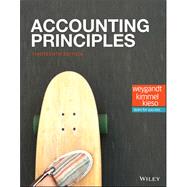Accounting Principles provides students with a clear introduction to fundamental accounting concepts with an emphasis on learning the accounting cycle from a sole proprietor perspective. This product helps students get the most out of their accounting course by making practice simple. Streamlined learning objectives help students use their study time efficiently by creating clear connections between the reading and the homework.








